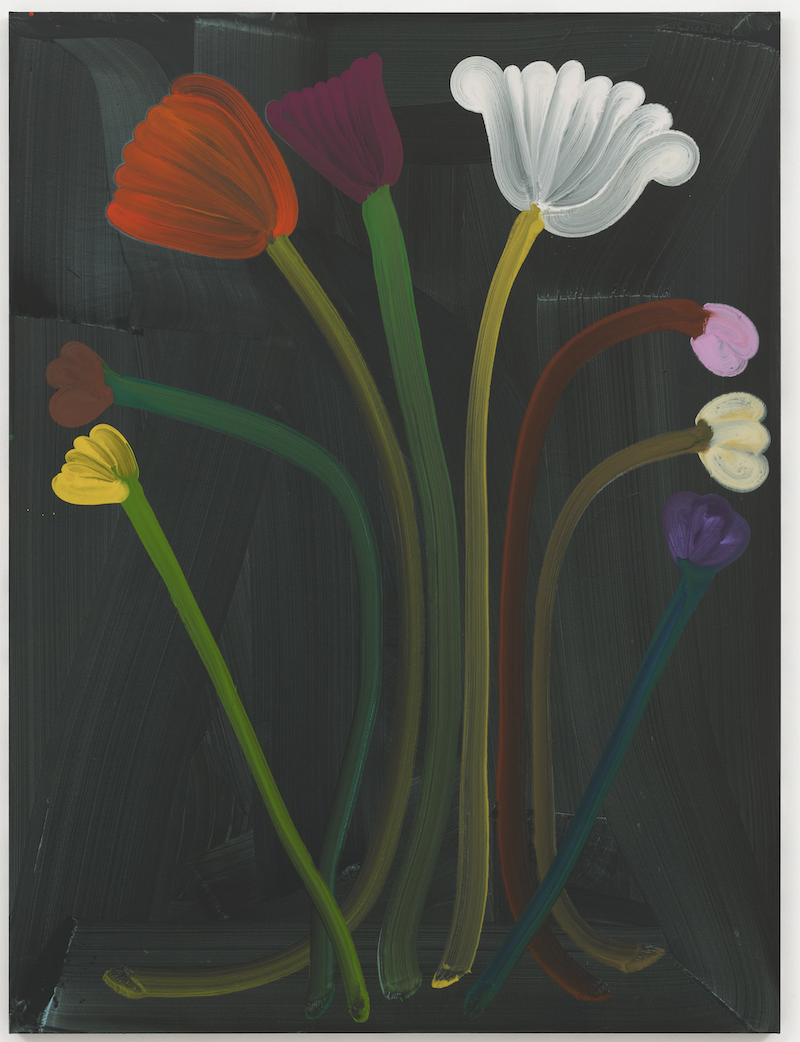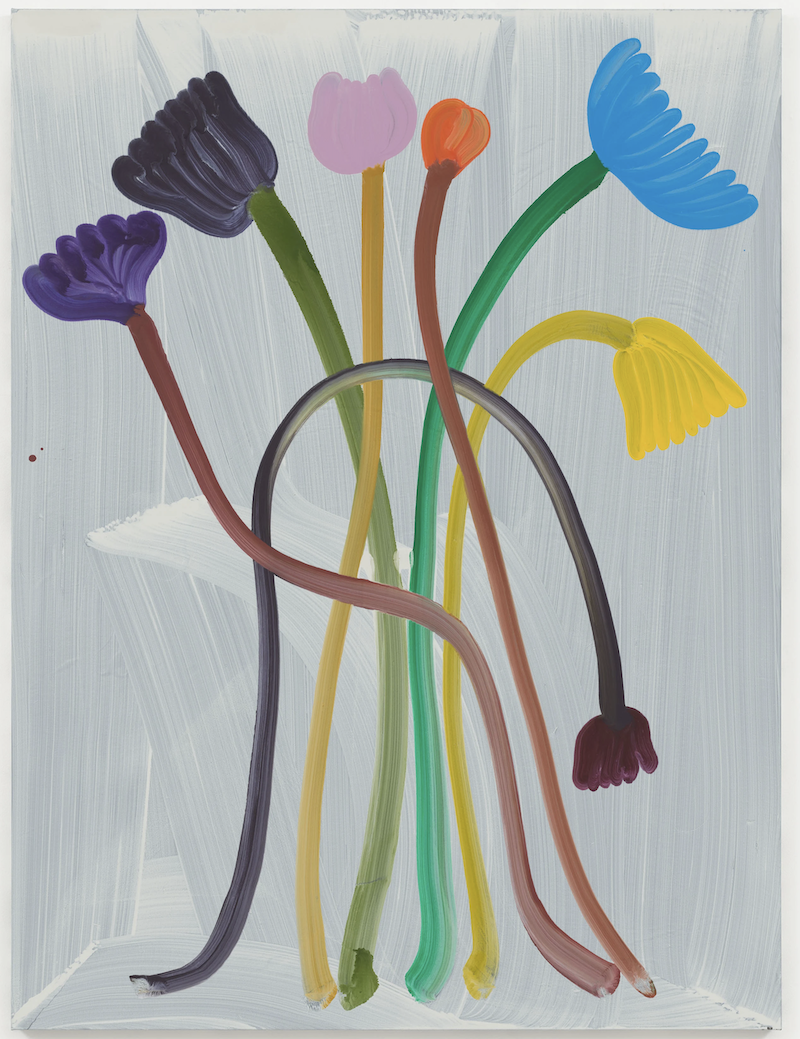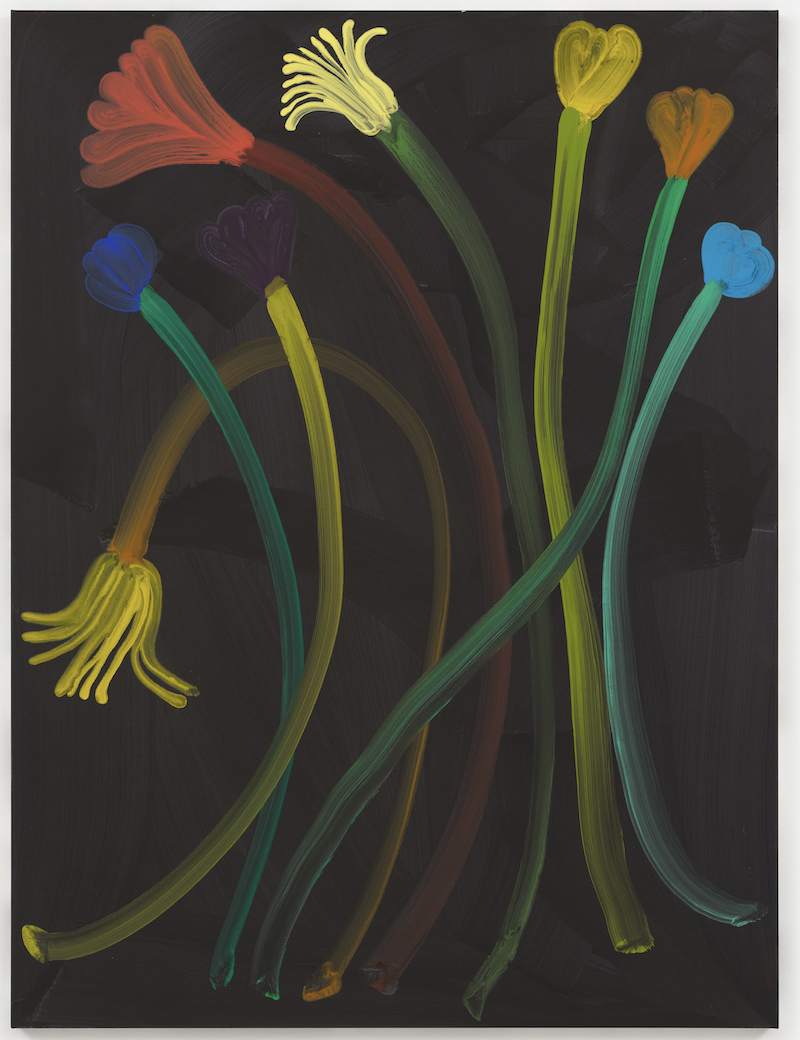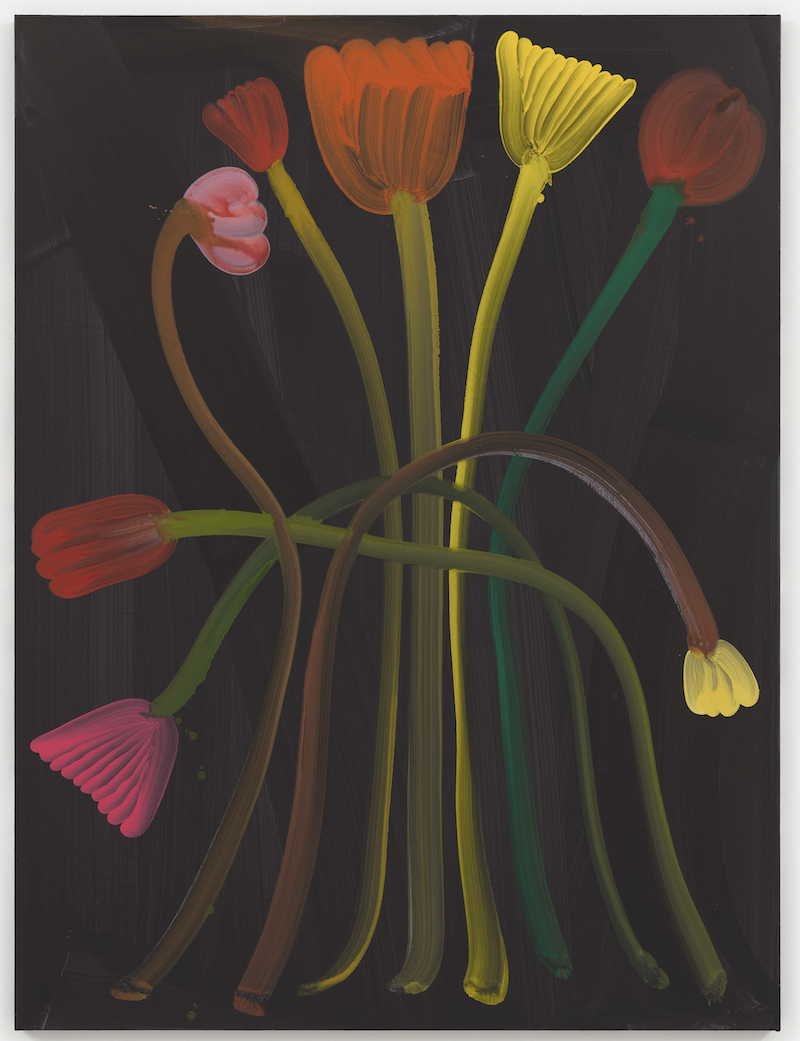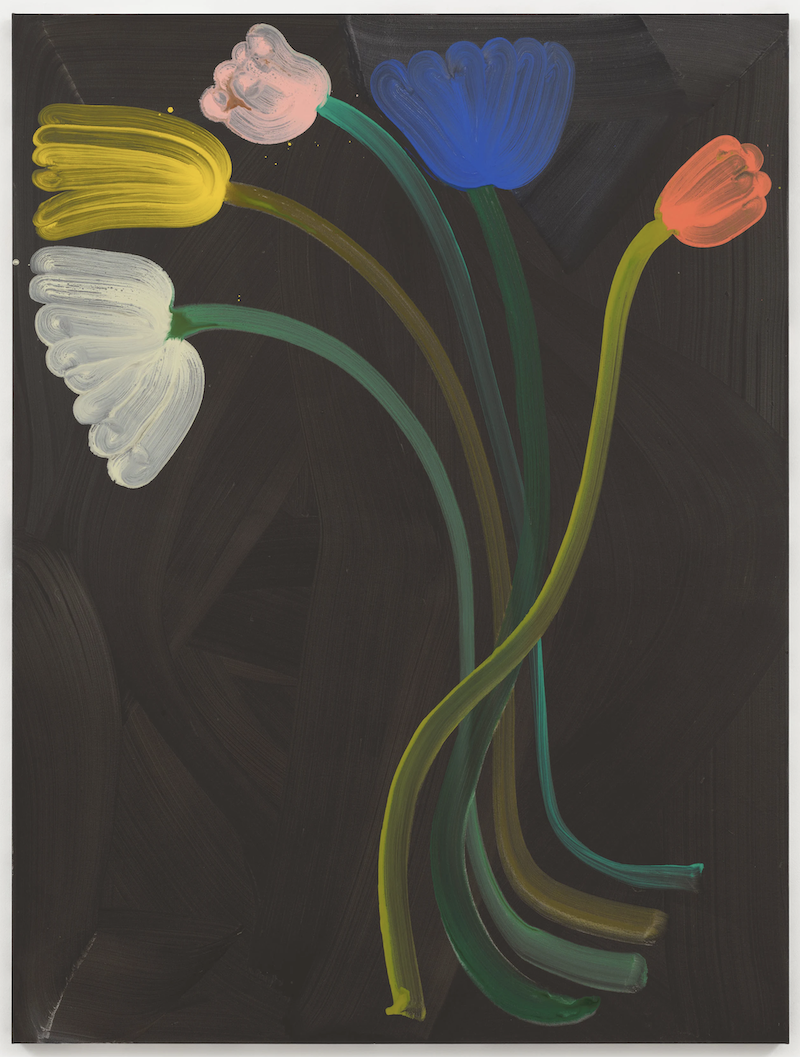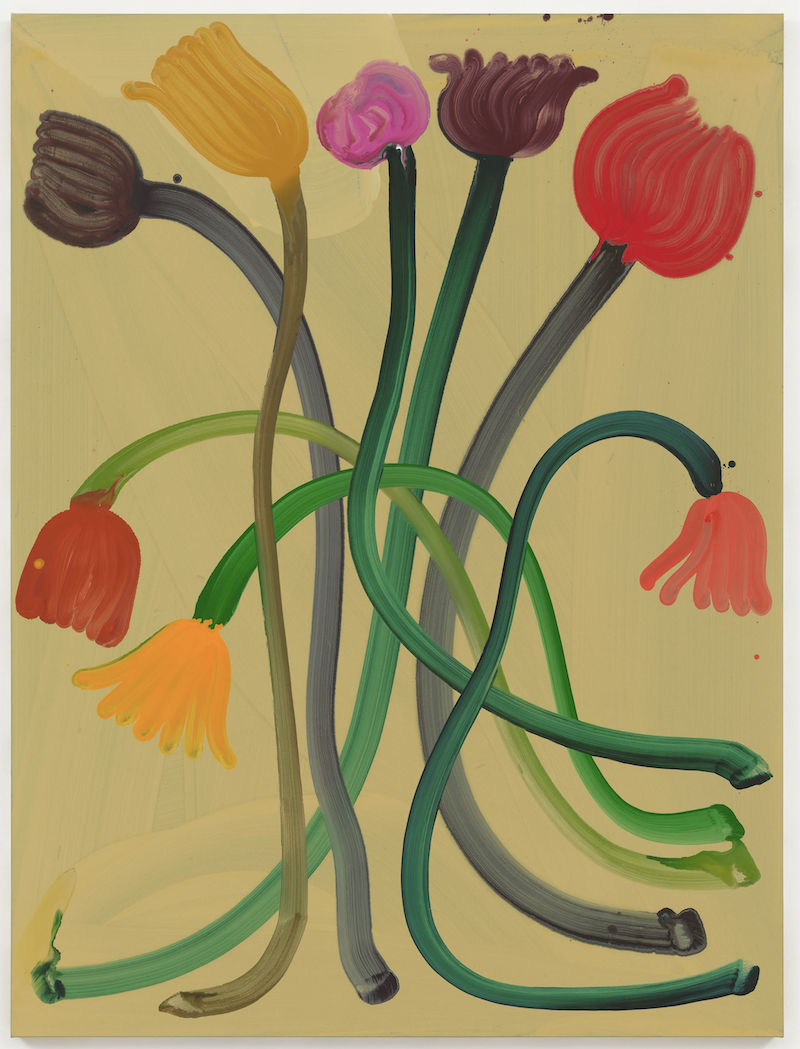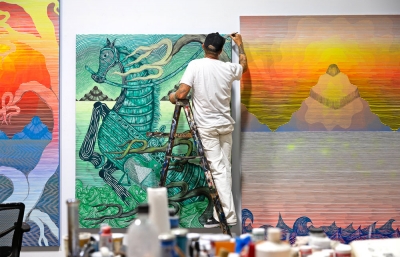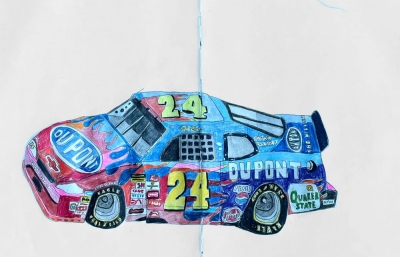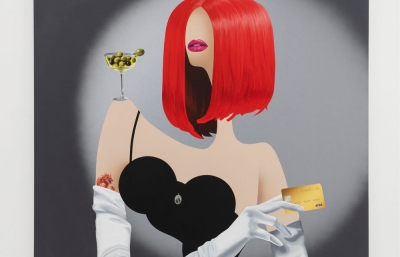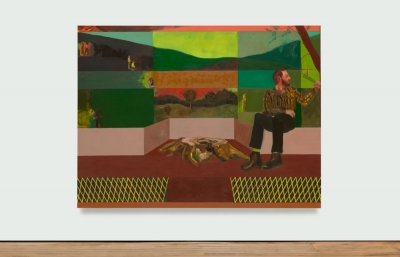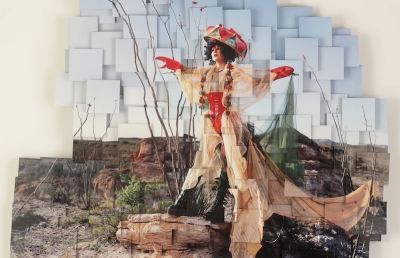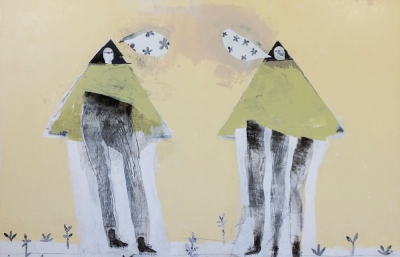Galerie Max Hetzler, London, is pleased to present Flowers, an exhibition of new paintings by Grace Weaver. This is the artist’s fourth solo exhibition with the gallery, and her second in the London space.
Painted in 2024 in Rangsdorf, Germany, Weaver’s latest body of sixteen large-scale canvases takes as its focal point one of the most enduring motifs of art history: the flower. Rendered in acrylic on canvas, a medium shift for the artist, the ‘Flower Paintings’ stand as both a counterpoint and continuation of Weaver's oil paintings and watercolours of the human subject. Indeed, while impressive in size, the paintings are imbued with a profound intimacy. Upright, drooping, or entwined in a tangle of stems, the brightly coloured flowers appear highly charged, as if resonating with a full spectrum of emotion.
In her painting practice, Weaver employs a distinctive process of layering. These new works are no exception: each surface comprises many coats of thinned matte acrylic paint, heavily watered down so as to slow the drying process and encourage a sense of fluidity. Working directly on the floor, as in the tradition of Abstract Expressionism, Weaver applies swathes of acrylic paint to her canvases with large, industrial-scale brushes affixed to broom handles. This close proximity to the works enables Weaver to paint more abstractly. Freed from the confines of content and orientation, the focus lies on colour, gesture and form. ‘I don’t see the final composition until the end,’ she notes. ‘It’s a way of temporarily undermining my own hold on the picture.’2 Her technique of painting wet-into-wet produces tactile and translucent surfaces marked with haptic brushstrokes and drip marks. Harnessing an element of chance, the colours bleed into one another at times, taking on the qualities of watercolour.
The series is divided into light and dark paintings, each similarly executed. For the lighter works, Weaver applies a final base layer of black, followed by a thinner layer of semi-translucent acrylic in white, cream or beige. In the black paintings, a light opaque layer of blue or white is covered with a thin, transparent wash of black in long overlapping strokes. The colours appear through the cracks like light, with layered markings and brushstrokes rendered visible like a palimpsest. Finally, the flowers are added, each broad, sweeping stem dictated by the artist’s arm span; each head ablaze in vibrant hues of yellow, purple, pink, red, white and blue. ‘I begin one-by-one laying in flowers,’ Weaver explains, ‘often erasing as I go, stem and then bloom, stem and then bloom. A little like a dance.’3
Weaver has previously described her figurative works as ‘monumental-scale paintings of non-monumental moments, ambivalent emotions, ordinary scenarios…’4 Wilting or alert, bending or blooming, the flowers conjure an analogous sense of the beauty found in the quiet mundanity of life. Facing towards or away from one another, they appear at times solitary, at others connected, as if performing the rituals of human interaction. The flowers are composed from a line for stem and strokes for petals, offering a reductive and archetypal version of the motif that teeters towards abstraction. One of the artist's influences for this series was grocery store tulips, that not-quite universal but common commodity marking the start of spring. Symbol of hope eternal, the changing of the seasons, cheap and cheerful, marred with a kind of drooping pathos. Thus intimating a complex and contradictory range of mood, energy and posture, the flowers present a renewed and stripped back exploration into the most poignant and pervasive themes of Weaver’s practice.



